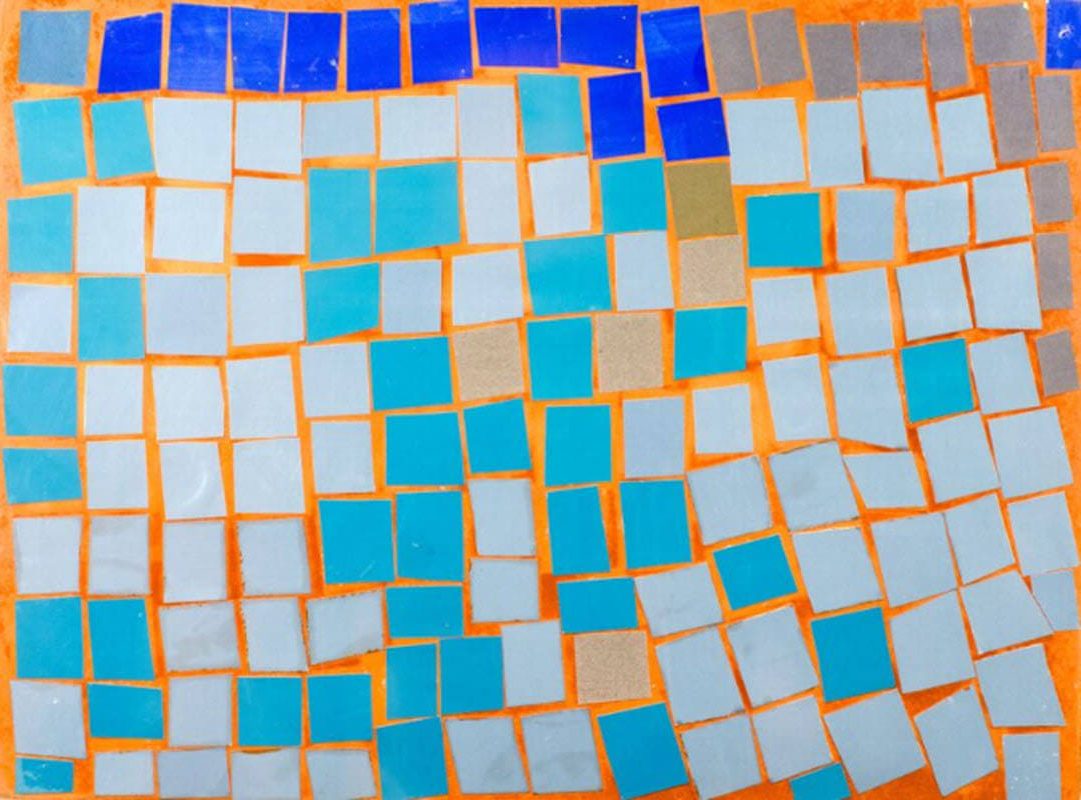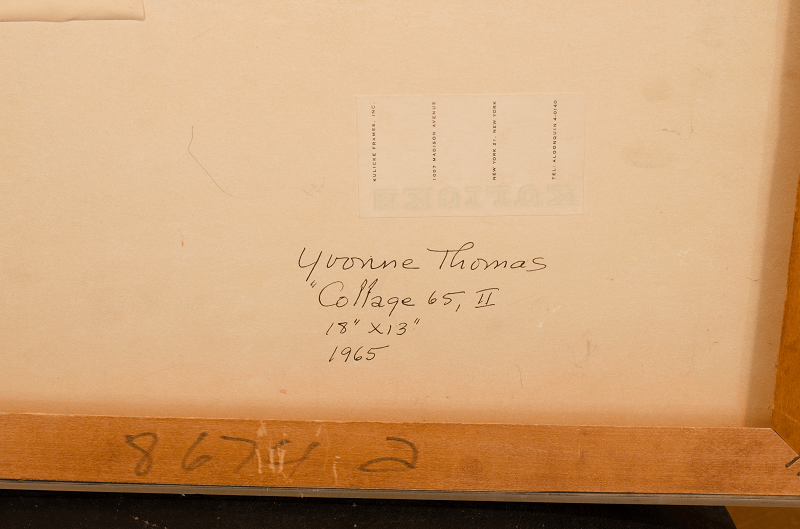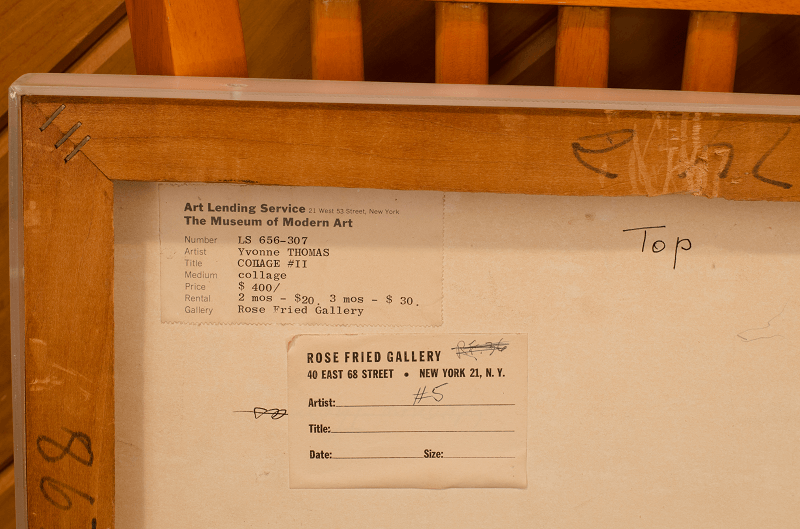TITLE: Collage #II
MEDIUM: collage
CREATED: 1965
SIGNED: unsure
SIZE: 13″ x 18″
Yvonne Thomas (1913 – 2009)
Yvonne Thomas was born in Nice, France and moved to the United States in 1925. She graduated from Cooper Union is 1928 and joined the Art Students League in 1940.Thomas was nearly forty years old and an accomplished painter when the 9th Street Show opened in 1951. She had already abandoned a promising career as a commercial artist and fashion illustrator in the thirties to pursue painting.
Her earliest training in New York was under Alphaeus P. Cole at Cooper Union. In 1948 she met Patricia Matta, wife of the famous Surrealist, who introduced her to a group of abstract painters forming a school called Subjects of the Artist. She enrolled and found a new home.
Thomas lived in New York City.
Yvonne Thomas’ art acknowledges the union of paint and support that the famous critic Clement Greenberg posed as a modernist quest for a responsible colorist. The poetry and sophistication of the paintings is the culmination of an education received firsthand from several leaders of the New York School’s first generation. Besides her education at Cooper Union and the Art Students League and a period of study at the famous Ozenfant School of Art in France, she was one of five privileged students to be part of the now famous Subject of the Artists School that was conducted by Motherwell, Rothko, Newman, Baziotes and Hare in 1948. She subsequently worked a year with Robert Motherwell. These artists did not encourage their student to emulate modern masters. Instead they instilled the formal advances of such figures as Matisse, Picasso and Mondrian. The artists learned how to deal with problems such as how to use color as a way to structure a painting. Through working with Motherwell, Thomas inherited a thorough grounding in improvisational principles of psychic automatism from the surrealists. She was further influenced by Hans Hoffman’s principles at his Manhattan school. From this school she appreciated the emotive potentialities of color and the need to work contrapuntal in terms of positive and negative spaces. She developed an appreciation for the significance of taking the overall dimensions of a given canvas into consideration as a key compositional element. Despite, and on account of this education, Thomas has always held to her own interpretation of these principles.
These works of Yvonne Thomas are painted with supple palettes and are described well in a 1960 review of Thomas’ works at the Stuttman Gallery in Manhattan by Donald Judd, “…Wide brush strokes and sweeps of color glissade to plane of the bare canvas. The paint and canvas are identified with one another continued into each other, and the consequent speed and thinness of the surface engender the clarity and singleness of the poetry.



